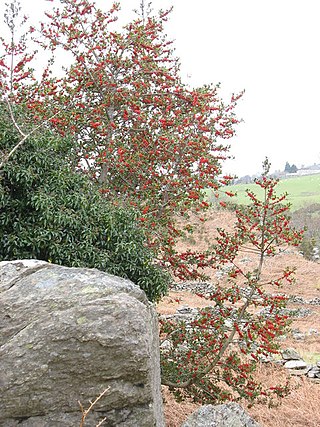Lists of variants appear both online and in the literature on the song. One source of documentation is the Vaughan Williams Memorial Library at the English Folk Dance and Song Society. The Broadside Index and the Folk Song Index are both compiled by Steve Roud and are searchable online. [19]
Tunes
A number of different variants use the same melody, including the sub-family known as "The Cowboy's Lament", of which "Streets of Laredo" is perhaps currently the best known. This tune is also used for a different song, "The Bard of Armagh".
The nineteenth century broadsheet versions from the British Isles were printed without tunes.
In 1904, it was conjectured that words of the song "The Unfortunate Lad" had originally been sung to an Irish tune called "The Unfortunate Rake", which had been printed with different words, or no words, in two collections of Irish tunes, one by Crosby, the other by Belden. [8] For example, the words provided for the air "The Unfortunate Rake" by Crosby are about a wandering harpist from Connaught, who is seeking pity and hospitality from his listeners.
English folk song collectors in the early twentieth century found different tunes being used for variants.
The melody for a variant called "The Unfortunate Lad", set in Rippleton Gardens, was published in 1904. [20]
Another melody, this time to a variant called "The Young Girl Cut Down in Her Prime", was collected in 1909 and published in 1913. [21] The tune is noted as "mixolydian with dorian influence". In a note to this article, Cecil Sharp reported that he had collected six different tunes for this song, and he published the ones he stated were the "two best tunes - both of the Henry Martin type". The first is labelled "dorian", the second "aeolian/dorian".
In 1915, yet another tune was published in the Journal of the Folk Song Society; this time stated to be similar to one used for rush-cart Morris dancing at Moston, near Manchester, England. [22]
In 1918, English folk song collector Cecil Sharp, who was visiting the US, collected a version which used the phrase "St James' Hospital" in Dewey, Virginia. This song was called "The Sailor Cut Down in His Prime". Sharp's field notes were available for researchers, though the song was not published until after Sharp's death, when his collaborator, Maud Karpeles, produced a second volume of songs from the Southern Appalachians. [23]
By 1937, the English Folk Song Society had become the English Folk Dance and Song Society, and in that year, another tune was published, this time to accompany a variant beginning with a reference to "Bath Hospital". [24] The tune is described as "dorian".
In the 1950s a version sung by A L Lloyd and called "The Unfortunate Rake" was released, with Kenneth Goldstein as editor of the LP called "Street Songs of England", and the same version was included on Goldstein's later Folkways LP, "The Unfortunate Rake". Though this version is described on the liner notes as a nineteenth century broadside version, and is often taken as such in subsequent literature, Lloyd's practice in the past had been to publish "composite" versions of songs, to give what he called "greater continuity or higher dramatic interest". [25] The liner notes to the second LP are often cited as a source of historical information about this song, though their reliability is questionable as they were compiled by Goldstein, who had a business education and was in the business of selling recorded folk music. [26] The version sung, and possibly devised, by Lloyd appears to be the earliest available variant using the title "The Unfortunate Rake" for which there is clear evidence.
These liner notes are the main origin of an often repeated incorrect idea that an early version of the song was collected in Dublin, Ireland. In those notes Goldstein cites an article by Kenneth Lodewick as a source. [27] In that article, Lodewick incorrectly substitutes "Dublin" for "Cork", which is the place of collection given in the source material he cites. That same source material is where A L Lloyd obtained the tune he uses on the LP. It is a collection of Irish tunes gathered by William Forde in Ireland, and published by P W Joyce, of the Royal Society of Antiquaries of Ireland in 1909. The tune in question is called "My Jewel, My Joy", and not "The Unfortunate Rake". [28] Lloyd's rationale for selecting this tune is outlined in the essay cited by Goldstein in the liner notes to the second LP. [29]
None of these versions, with the exception of the 1950s version by A L Lloyd, and the version collected in Virginia, includes a reference to the "St James" hospital or "infirmary", though some refer to a differently named hospital.





